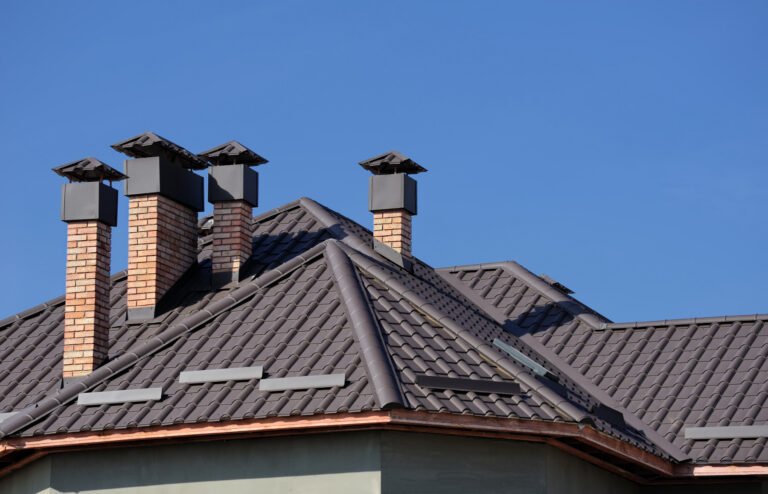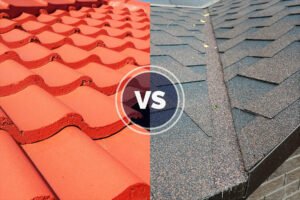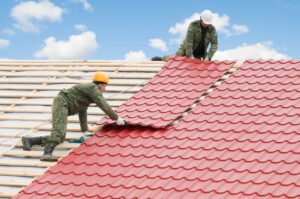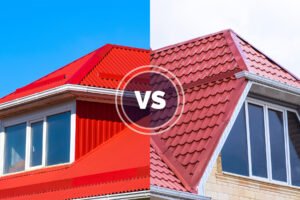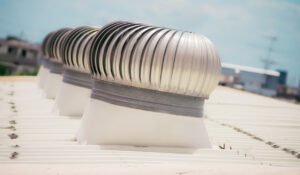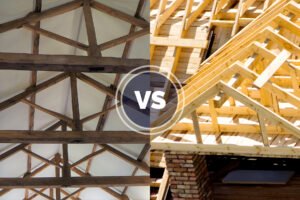Does roof replacement and layout tire you? Or do you need an affordable roof covering that protects you from the outdoor elements? Then, this article will help you!
Today, we will discuss 12 different types of roof shingles, their costs, durability, and features to help you pick the best shingle for your roof. We’ll further discuss their materials and strengths for better insights!
Key Takeaways
- There are 12 types of roofing shingles, whose sizes, costs, and colors are discussed below!
- You can use Asphalt, Wood, and Concrete shingles for gentle slopes and Clay ones for high-pitched slopes. But that’s not all! We have more options down there!
- Clay, Slate, and Concrete shingles resist the wind and snow. But don’t forget to check their other pros and cons too.
- Wood and Clay shingles are good sound insulators, but Composite and Rubber ones insulate against the cold too. Read along to get better insights into different types of roof shingles!
What Are Roofing Shingles & Why Should You Use Them?
Roof shingles are flat interlocking tiles that are connected together to create a closed, lightweight roof covering. This covering spreads from the bottom of the rafter to the roof’s apex. Roof shingles make a pitched roof more durable and aesthetic.
Other benefits of roof shingles are:
- Lightweight and can attach to thinner rafters and joists
- Fixed parts and sizes that make installation and repair easier
- Holds on to different types of roof vents and flashings easily
- Optimal weather, humidity, and fungus resistance
- High contractor and manufacturer defect warranty
Popular Types of Roof Shingles to Cover Your Roof
Roof shingles aren’t universal and use different materials and fittings according to the roof pitch. They also vary according to the climates and need analysis for better roof design and performance. Below are the different types of shingles available for roofing.
1. Asphalt Shingles
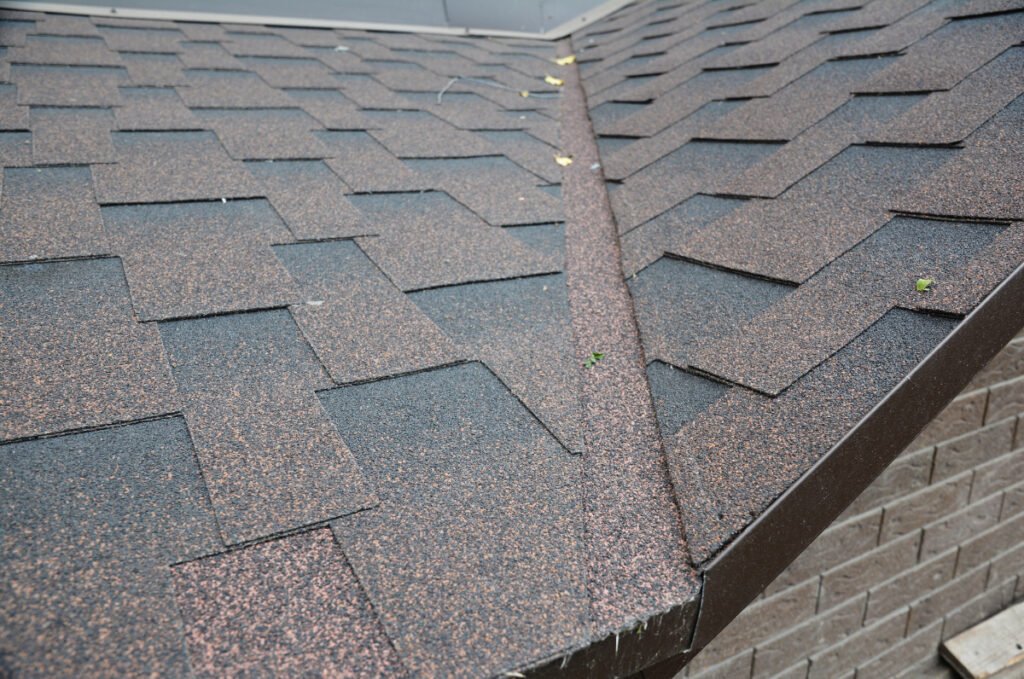
What are These: Asphalt shingles are simple three-layered shingles with a base layer, water-proof asphalt, and some ceramic granules or fiberglass to resist moisture at the top.
Asphalt shingles feature side-lapped joints and an organic cellulose or paper base that fits different roof pitches. And since these contain mica and sand, they don’t stick and leave proper gaps for good air circulation.
Additionally, these shingles have excellent tensile strength and impact resistance against rain, snow, and hail. So, you can use them for gentle slopes and terraced roofs too!
But the poor wind resistance of asphalt shingles may cause it to buckle and expand with temperature. In this case, you can use higher Class 3 or 4 shingles in windy areas and caulk the edges to save them from loosening.
You can also treat them with enamel, resin, or fiberglass and enhance their fungi and fire resistance, and temperature control. This way, you can lower your energy consumption and bills and increase the resale value extensively.
Asphalt shingles are further classified into three types:
- 3-tab Asphalt Shingles: They are considerably flat and have three grooves on each side to hold the adjacent shingles. These are the cheapest but have low durability, weather resistance, and strength.
- Dimensional Asphalt Shingles: Dimensional shingles are flat, glossy, and offer better moisture control than the rest. Plus, they are super strong and have a 5-year warranty.
- Luxury Asphalt Shingles: Luxury asphalt shingles are large and faux-stone-like in appearance. So, they are lightweight and faster to install.
| Average Cost | $ 70 – 90 per square foot |
| Average Lifespan | 10 – 30 years |
| Available Colors | Sand, Taupe, Navy Blue, Forest Green, Beige, Tree Brown, Tan, Gray |
| Sizes | 12 X 36 inches |
Pros:
- Affordable and Long lasting
- Ideal for humid, tropical climates of the Northeast and the Northwest
- Lightweight and Easy to fit
- Can be installed on top of another roof covering
Cons:
- Poor wind and temperature control
- Might crack with extreme heat and snow
- Aren’t aesthetic and might not boost the curb appeal
Add fiberglass, ceramic or top enamel coat to protect the shingles from harmful UV rays and heat.
2. Aluminum Shingles
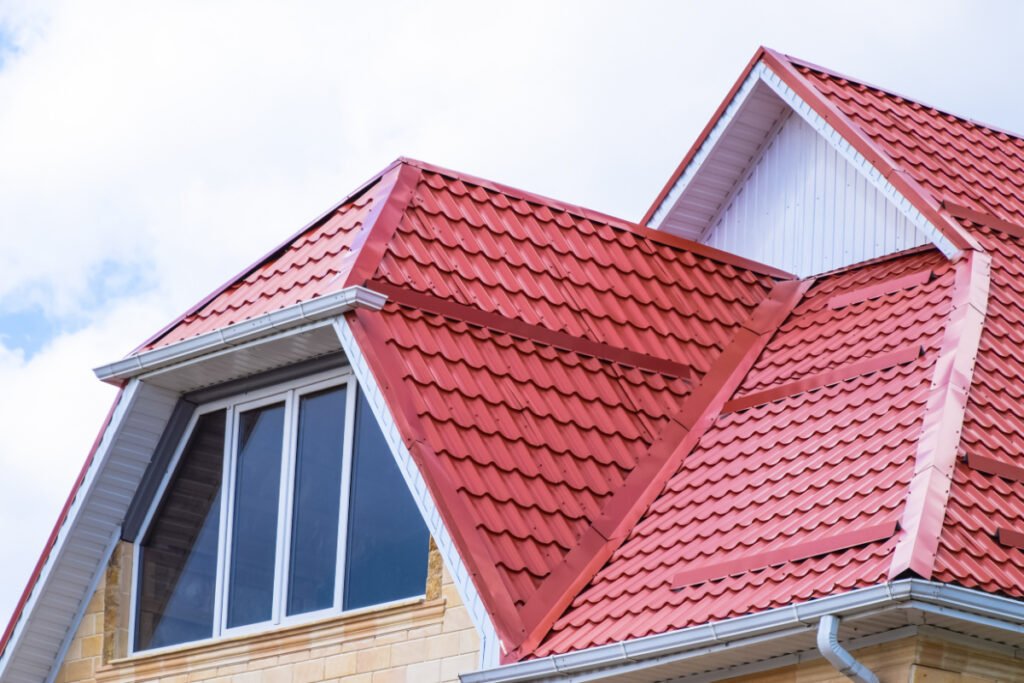
What are These: Aluminum shingles are stamped aluminum sheets, completed with premium paint and primer and a fire-retarding film for protection.
Aluminum shingles are flat strip shingles with thinner cross-sections. So, they are lightweight and easy to install. These shingles can fit onto olden rafters, pre-tensioned trusses, or high-pitched roofs.
Moreover, they are durable and highly resistant to heat, rain, and snow. And since they reflect UV light and heat, they lower your energy use and costs! So, pick them for better temperature control along the coasts and forests.
But these shingles have low impact resistance and might deform due to hail or heavy roof runoff. So, you must add foam or cellulose insulation to strengthen the roof in humid climates.
| Average Cost | $ 300 – 500 per square |
| Average Lifespan | 30 – 50 years |
| Available Colors | Caramel, Red, Charcoal, Forest Green, White, Beige, Slate |
| Sizes | 5 X 7, 10 X 10 inches |
Pros:
- Fire, Wind, and Weather resistance
- Lightweight and Easier to Fit
- Modern, Sleek appearance
- High durability and Warranty period
Cons:
- Smaller and Limited sizes
- High initial cost and maintenance
- Poor sound control and impact resistance
Use nylon under-roof filaments to dampen the roof and reduce the shingle noise during rain and storms.
3. Wood Shingles
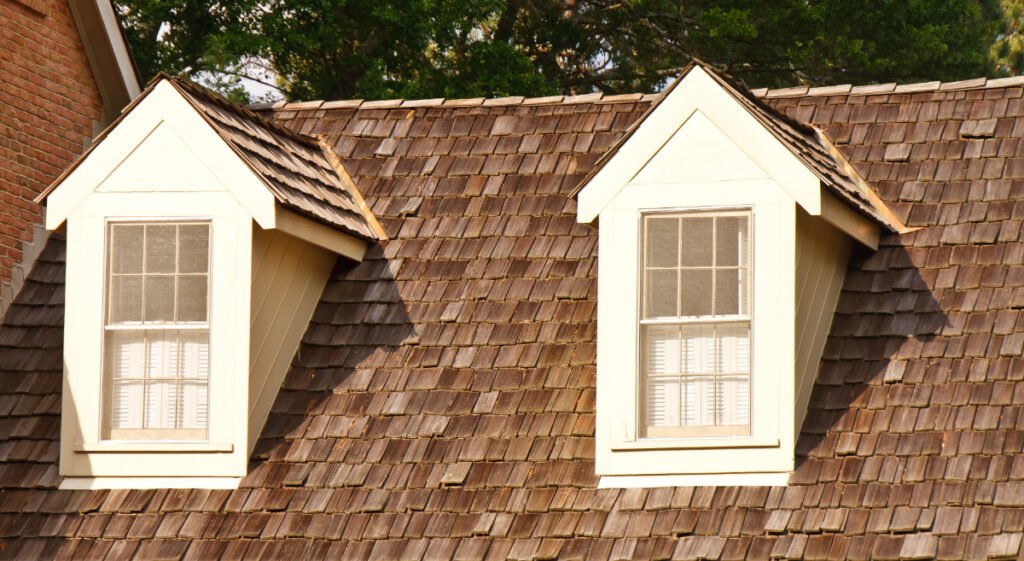
What are These: Wood shingles are tapered, machine-cut wood tiles usually made from Cedar, Spruce, or Pine. They are split from the straight wood logs and treated with an enamel finish.
Wood shingles are ¼-inch trimmed wooden tiles that fit onto roofs using an easy side and top overlap. Hence, they can easily fit onto steep or gentle roof slopes but don’t offer much flexibility for multi-layered or dormer roofs.
And since they are thick and heavy, they resist wind, UV rays and provide better temperature and moisture control. So, they are energy-efficient and reduce your air-conditioning costs drastically.
However, wood shingles are vulnerable to fungus and might ignite a fire in drier areas. But, you can use treated shingles, vapor barriers, or vents to keep them cool and mildew-free. Or, pick Class A-rated shingles to prevent fire hazards in drier areas.
Here’s a list of some common woods to make shingles:
- Red & White Cedar
- Pine & Spruce
- Cypress
- Redwood
| Average Cost | $ 350 – 400 per square |
| Average Lifespan | 20 – 25 years |
| Available Colors | Gold, Walnut, Brown, Gray |
| Sizes | 16, 18 and 24-inch lengths with varying widths |
Pros:
- High curb appeal for both modern and traditional exteriors
- High wind and impact resistance
- Easy to Install, Repair and Maintain
- Better insulation and Energy saving
Cons:
- Low fire and pest resistance
- Low flexibility and adherence to curvilinear shapes
- Might rot and warp with heavy moisture
- Expensive and heavy
Polish the shingles and reapply pesticides, vinegar or neem oil once a year to get rid of the pests quickly.
4. Wood Shakes
What are These: Wood shakes are hand sawn or split wood sections with angular edges and a laminated or veneer covering to save from leakage and moisture.
Wood shakes are small Cedar trimmings with varying shapes and interlocking joints. They are thick and heavy, making them best for gentle sloping roofs in dry and low-rainfall areas. But, you can use them on top of a metal or wood roof to secure it from the weather.
Though wood shakes are more costly than typical shingles, they last longer with proper maintenance. And they don’t break easily and have a high tensile and compressive strength to withstand the winds.
However, these shingles are prone to fungus and might trap heat under the attic. So, adding adequate roof vents and insulation is advisable. And, don’t forget to top it all with a fire retardant cover to save them from burning.
| Average Cost | $ 6 – 10 per square foot |
| Average Lifespan | 30 – 40 years |
| Available Colors | Blue-gray, Beige, Skyblue, Brown, Navy blue |
| Sizes | Random sizes, but not more than 13 inches |
Pros:
- Thick, Heavy, and Sturdy
- Can be placed on top of another roof
- High heat retention and insulation
Cons:
- Expensive
- Vulnerable to rot and mold
- Unsustainable and High carbon footprint
- Flammable
Use an attic dehumidifier or add exhaust fans to save the wood shakes from excess water absorption and warping.
5. Clay Shingles
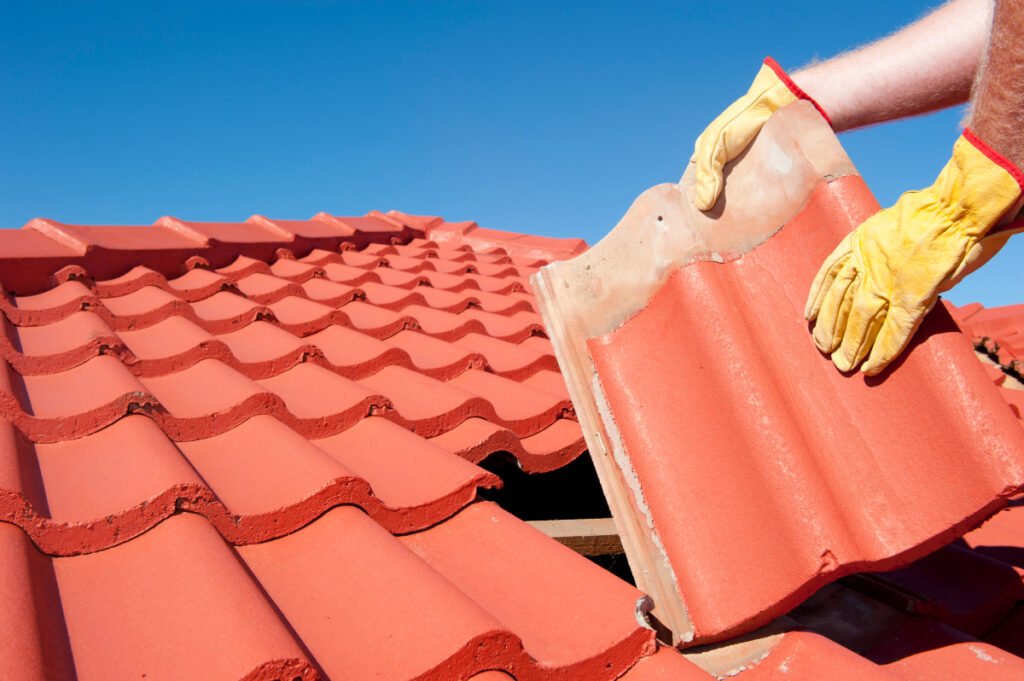
What are These: Clay shingles are flat, scalloped, or barrel-shaped tiles of pure earth and terracotta clay, often covered with silica, manganese, or aluminum oxide.
Clay tiles are molded earth tiles with a slight curvilinear shape and sliding joints. So, they are durable and can be used on high-pitched to gentle slopes.
And, since they have high impact strength and tensile resistance, you can nail them to vaulted and curvilinear roofs too. Moreover, they are energy-efficient and maintain proper temperature.
They even resist fire, winds, rain, and fungus. So, you can easily use them for tropical and coastal climates, but you must add flashing for moisture control.
However, they might need additional framing members and braces to bear extra weight. Or, you can pour some roofing cement over your roof and fix them permanently. And don’t forget to add some filler to the gaps to avoid leakage.
| Average Cost | $ 500 – 1000 per square |
| Average Lifespan | 50 – 60 years |
| Available Colors | Copper, Gray, Blue, Orange, Apricot, Brown, Walnut |
| Sizes | 8 X 5, 10 X 10 inches |
Pros:
- High fire, wind, and impact resistance
- Extremely durable and easy to replace
- Versatile – Mediterranean and Asian ambiance
- Eco-friendly
- Energy efficient and Excellent Insulation
Cons:
- Expensive and Heavy
- Brittle and might not support weight on top
- Difficult to install and need precise cutting
Clay shingles are susceptible to insect attacks and breeding. So, spray some insecticide or bleach between the gaps as soon as you install them.
6. Concrete Shingles
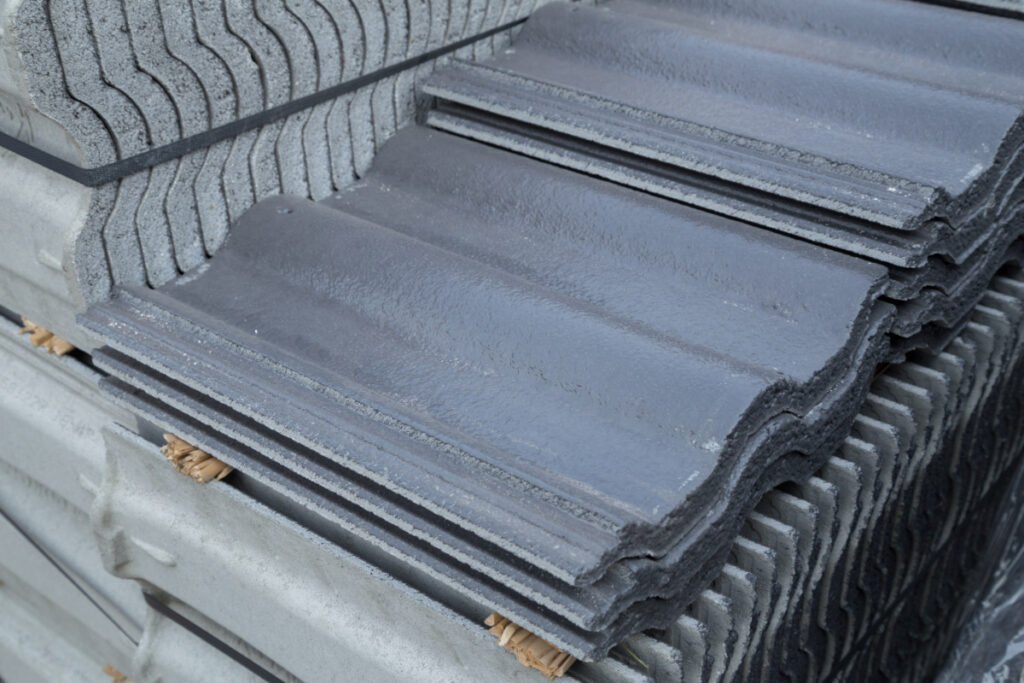
What are These: Concrete shingles are hand-molded or machine-molded cement tiles, finished with an additional waterproofing layer for durability.
Concrete shingles have a thicker base and a slightly inclined top. They are heavy and can be used only on gentle-sloping or flat roofs. So, they might need batt insulation or cover to protect from leaks and moisture.
Moreover, these shingles have excellent fire resistance and can withstand heavy heat, hail, and snow, and last for ages. Though they might discolor and weather after 10-15 years, you can easily reglaze them with enamel.
However, concrete shingles are costly and might disrupt your house’s curb appeal. And they are likely to break and cannot be replaced easily. So, use them in drier and arid climates, away from all the vegetation.
| Average Cost | $ 6 – 12 per square foot |
| Average Lifespan | 50 – 60 years |
| Available Colors | Brown, Beige, gold, Gray, Tan, Charcoal |
| Sizes | 12 X 16 inches |
Pros:
- Durable and Low maintenance
- High Fire, Heat, Rain and Snow resistance
- Recyclable
- Sturdy and doesn’t deform easily
Cons:
- Heavy and Difficult to mount
- Expensive
- Low impact and chipping resistance
- High material and labor costs
Concrete shingles cannot be mounted on slopes with pitches greater than 18°. So, always check your roof slope and add sufficient bracing to support the shingle.
7. Steel Shingles
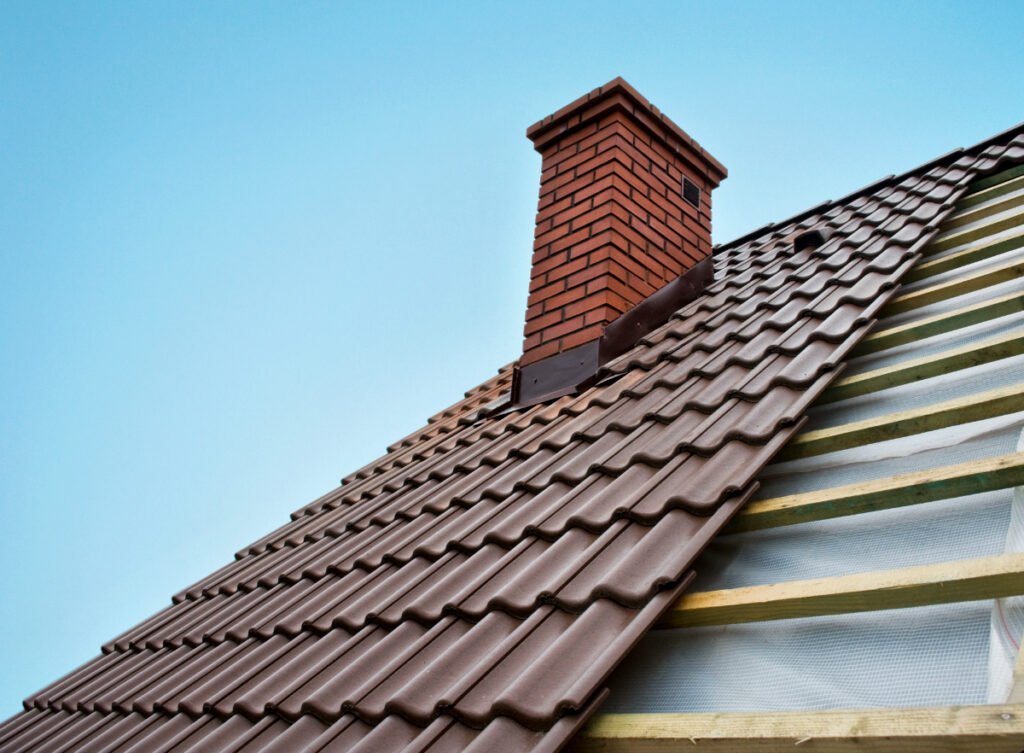
What are These: Steel shingles are cold-rolled steel panels with a nickel or chromium covering that protects them from rust.
Steel shingles are wavy, S-shaped shingles that slide into one another and create a chain-like roof covering different pitches. They are also available in a box-like shape for flat roofs and a wavy shape for curvilinear roofs.
Overall, these shingles are moisture and mildew resistant and have a high tensile strength that saves them from buckling and falling. Plus, they reflect heat well and keep coastal or tropical homes cooler. That means, they save energy bills too!
However, steel shingles are thin and might dent due to low impact resistance. And they are extremely noisy during the snow and hail storms. So, avoid using them in humid areas or add rigid foam insulation to absorb the noise.
| Average Cost | $ 4 – 5 per square foot |
| Average Lifespan | 40 – 45 years |
| Available Colors | Black, Charcoal, Red, Green, Gunmetal, Gold, Copper |
| Sizes | 24 and 26 gauge steel with a 24 inches wide panel |
Pros:
- Affordable and Longlasting
- Sustainable and Environment-friendly
- Energy efficient and low cooling costs
- Sleek and Modern appearance
Cons:
- Might dent and deform easily
- Noisy
- Prone to rusting in humid areas
Pick corrugated steel shingles to increase the impact resistance and prevent denting in tropical or city areas.
8. Copper Shingles
What are These: Copper shingles are sectional copper sheets braced and welded with a seam to hold onto different roof pitches and designs.
Copper shingles are more like large, flat panels that can be easily installed onto sloping roofs and pitches. They have faster installation and give a seamless look and better curb appeal.
Moreover, they are lightweight and do not extensively load the roofs and trusses. So, you can use affordable thin or short-spaned trusses. And since they retain heat and humidity, you won’t have to worry about the air conditioning bills too!
However, these shingles are expensive and expand or contract with temperature. So, you’ll need to use proper fasteners to seal the gaps and prevent leaks. Or, you can add the right roof flashing to drain the runoff.
| Average Cost | $ 25 – 30 per square foot |
| Average Lifespan | 40 – 50 years |
| Available Colors | Aged Copper, Deep Orange, and Brown |
| Sizes | 18 X 24 inches |
Pros:
- High fire resistance and tensile strength
- Boosts the resale value
- Resistant to algae and fungus
- Lightweight and Flexible
Cons:
- Loud and Corrosive
- Expensive
- Sensitive to weather and pressure changes
Use cement, sawdust or lime fillers to cover all the gaps between the copper shingles and protect them from leaking.
9. Slate Shingles
What are These: Slate shingles are naturally mined and cut rock pieces with a tapering cross-section and an additional enamel coat.
Slate shingles are stone tiles with thick edges and a flat surface. They are heavy and difficult to lay and often incur high material, labor, and installation costs. Plus, they need extra reinforcement to support the roof.
But slate shingles are highly durable and energy-efficient and can cool down your home by 3 – 4°C. And they resist the wind, rain, and fire and last for more than 100 years without any maintenance.
Though they are fragile and prone to break, you can nail them back on the roof. Or, you can cover them with resin to add more stability.
| Average Cost | $ 10 – 20 per square foot |
| Average Lifespan | 100 – 150 years |
| Available Colors | Black, Red, Gray, Coffee-clay, Brown, Walnut |
| Sizes | 12 X 6, 12 X 24 inches |
Pros:
- Energy efficient and Excellent insulation
- Fire, Heat, Rain and Fungus resistant
- Natural and Rustic
- High durability with low maintenance
Cons:
- Heavy; Needs additional bracing
- High initial cost
- Needs specialized shingle installers and equipment
Use proper mortar roof decking or add roofing cement to balance the weight of slate shingles and save them from falling off.
10. Composite Resin Shingles
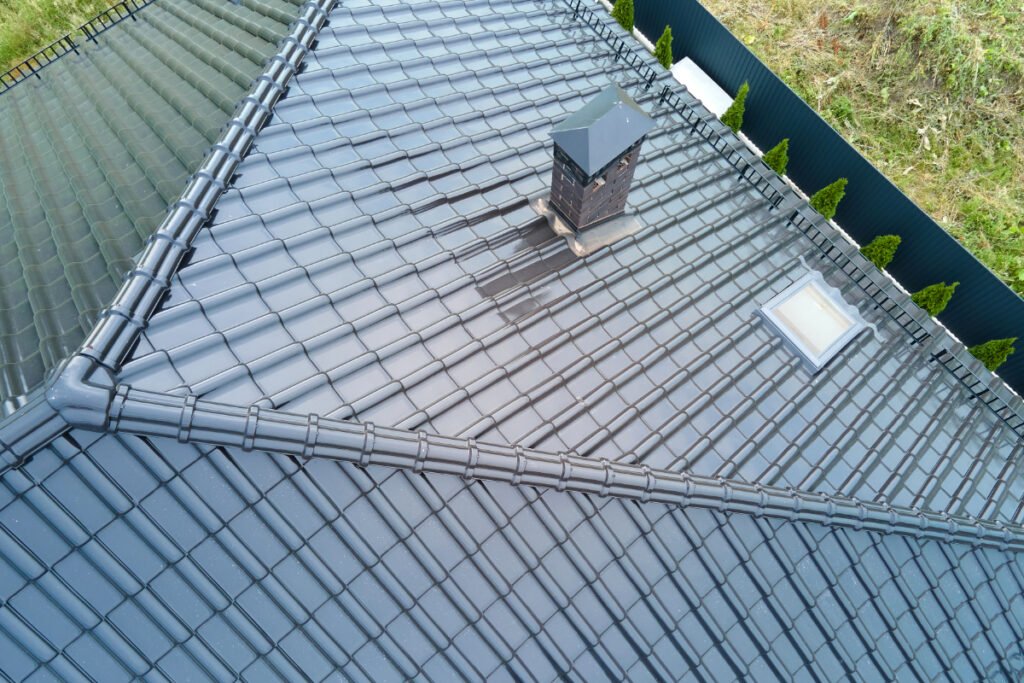
What are These: Composite shingles are simple panels of fiberglass, ceramic, polyester, plastic, or paper, bonded together with resin and laminates.
Composite shingles are high-impact shingles designed to withstand hails, strong winds, and storms. So, they offer better stability than other shingles, maintaining optimal temperature and humidity inside.
Moreover, composite shingles are eco-friendly and mimic the look of Natural Cedar or Oak at a low cost. And since they have a resin cover, they resist fungus and leaks too!
| Average Cost | $ 400 – 500 per square foot |
| Average Lifespan | 50 – 60 years |
| Available Colors | Slate, Cottage Red, Hunter Green, Brown, Blue, Pewter |
| Sizes | 12 X 40 inches |
Pros:
- High impact and weather resistance
- Mimic the look of natural stone and wood
- Long-lasting and durable
- Better protection from insects and fungus
- Compact and Leak-free
Cons:
- Less versatile and Limited sizes and colors
- Need specialized installation and repairs
- High initial cost
Composite resin shingles don’t have any warranty card. So, don’t forget to check the manufacturer and color defects before installation.
11. Solar Shingles
What are These: Solar shingles are large solar paneled shingles with rounded edges that slide onto the rafters and cover your roofs.
Solar shingles are large, thick rectangular panels with a lower pitch that fits onto sloping roofs. They might be difficult to DIY so it’s best to use professional installers’ help.
Moreover, these shingles generate more electricity for the house, reducing the heating, cooling, and energy costs.
But, they might not be that effective in temperate or snowy climates, unless you install them on the southern slope to absorb more heat.
And since solar shingles are completely synthetic and durable, you won’t have to worry about fungus and pests! But don’t forget to add the right flashing to prevent water leakage.
| Average Cost | $ 5000 – 7000 for Powerwalls |
| Average Lifespan | 20 – 30 years |
| Available Colors | Black and Green |
| Sizes | 12 X 86 inches |
Pros:
- Modern and Seamless
- Quicker installation than traditional solar panels
- High-efficiency and cost-effective
- Lower operating costs
Cons:
- High cost and challenging to install
- Bulky and heavy
- Depends on the roof slope, climate and direction
Use inclined shingles or install them on a clamp to absorb more heat on flat roofs.
12. Rubber Shingles
What are These: Rubber shingles are simple recycled plastic, rubber, and slate dust shingles with a synthetic felt covering to prevent chipping and warping.
Rubber shingles are flat shingles with side-lap joinery and a flexible surface that can fit easily on to different rafters. You can also nail them to different roof slopes, designs, and free-form roofs. So, they are very flexible and customizable.
Also, these shingles are resistant to mold and mildew and need little to no maintenance in the long run. They have good wind and temperature resistance and absorb all the excess humidity from the attics.
However, they may have an unpleasant smell and might need surface treatment or vaporization to avoid suffocation. And they must have proper roof gutters and fascias to prevent leaks between their gaps.
| Average Cost | $ 4 – 8 per square foot |
| Average Lifespan | 25 – 30 years |
| Available Colors | Black, White, Gray, Brown |
| Sizes | 7 X 8, 15 X 15 inches |
Pros:
- High wind and impact resistance
- Do not warp, crack, curl or deform
- Absorb UV rays and maintains the temperature
- Excellent sound and moisture absorption
Cons:
- Expensive
- Need a professional contractor
- Might discolor after some time
Ask the contractor to design some ridge vents or soffit vents on the underside of the shingles for more airflow and cross ventilation in the attic.
Tips for Picking the Right Roofing Shingles
- Always check the local building codes and warranties before installation.
- Pick stable and fire-proof slate or composite shingles if you live near the rainforests or in drier climates.
- Choose Aluminum or concrete shingles to protect against the rain, but add suitable insulation to absorb the noise.
- Select Asphalt or Wooden shingles for gently sloping roofs while going with Clay or Copper ones for pitched roofs.
- Never install vaulted or curved clay shingles over flat roofs, as they might absorb moisture and break.
Can You Recycle Roof Shingles?
Yes, metal, rubber, and aluminum shingles can be melted and recycled back to shape. Similarly, wooden shingles can be broken and recycled into particle boards. But, you cannot recycle Asphalt or composite shingles as those are multilayered and difficult to melt.
Can Roof Shingles Be Waterproofed?
Aluminum, Concrete, Rubber, and Copper shingles are naturally water-resistant and don’t need any other treatment for drainage. But, you can add a waterproofing solution on wood and slate and protect them from weathering.
Can You Paint Roof Shingles?
Yes, you can easily paint clay, slate, metal, and wood shingles with any exterior enamel or epoxy paint. But, rubber and copper shingles might require sanding and priming before painting.
How Do You Fix Roof Shingles?
Shingles use different fixing methods and fasteners to adhere to the roof surface. While asphalt, wood, and rubber shingles need to be nailed and screwed, you can fix solar and concrete shingles with a thick layer of adhesive.
Which Nails Should You Use to Fix the Roof Shingles?
Generally, you should use ⅜ to 1-inch nails to secure the shingles to the house. But, you can use 1 ¼-inch nails for thicker clay and slate shingles.
Roof shingles depend upon the design and slope, but you must also consider the climate and weight. Wood and slate shingles are durable, but you can get composite ones at half the cost! Or, you can pick asphalt and rubber shingles to lower energy use and control heat.
But do you know what supports the shingles and saves them from falling? A roof-truss. So, don’t forget to check the different types of roof trusses while designing your fool-proof roofing system.

